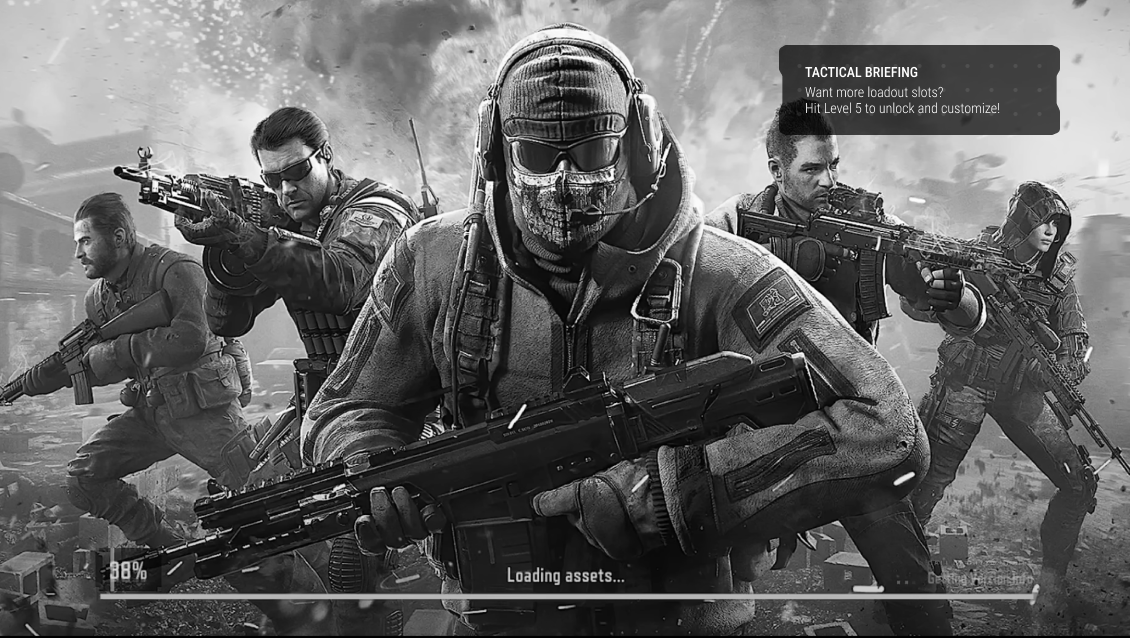COD: MOBILE
Improving Day 1 retention in Call of Duty: Mobile through personalized, player-first experiences.
PROJECT TYPE
Gaming retention analysis & strategy
TIMELINE
2 weeks
ROLE
UX Strategy
UX/UI Design
PROJECT INTRO
As part of ELVTR’s Advanced UX/UI for Gaming course, I developed a retention analysis and experience design strategy for Call of Duty: Mobile, a fast-paced, competitive, multi-player shooter with a large global player base.
The Challenge
The core challenge I set out to solve was:
How might I improve Call of Duty: Mobile’s first gameplay experience to deepen emotional investment and increase Day 1 retention?
The Process
EVALUATING THE EXISTING EXPERIENCE
I began by auditing a 16-minute iOS playthrough to evaluate the early gameplay flow. This included:
Assessing the game’s core experience goals
Defining qualitative and quantitative objectives
Mapping the first gameplay’s retention framework
Analyzing the structure and pacing of the learning experience
Evaluating player gameplay habits and engagement
FEATURE PRIORITIZATION & SCOPING
After evaluating the early gameplay flow, I identified key opportunities to improve Day 1 retention that focused on personalization elements to enhance onboarding and build emotional investment earlier in the player journey.
To help narrow the focus, I conducted a scoping exercise to prioritize features based on impact and feasibility, targeting quick wins that could boost retention and deliver meaningful player value with minimal lift.
STRATEGY #1: FTUE TUTORIAL
The first retention strategy focused on improving the FTUE by reducing friction in the onboarding tutorial and giving players more control over their initial experience.
MAKE THE TUTORIAL OPTIONAL
Allowing players to skip the tutorial gives experienced players the freedom to dive directly into gameplay, reducing frustration and aligning with Call of Duty: Mobile’s fast-paced nature. This choice empowers the player and supports a wider range of playstyles.
INTRODUCE HUD LAYOUT CUSTOMIZATION DURING ONBOARDING
Integrating HUD customization into the tutorial surfaces this key feature earlier, helping players tailor the interface to their playstyle and accessibility needs. This reduces friction in the first match and supports long-term retention by improving comfort and control from the start.
PROPOSED ONBOARDING FLOW
To implement these FTUE improvements, I created a flowchart outlining where each new option and feature should be integrated within the onboarding experience.
STRATEGY #2: LOAD SCREEN TIPS
The second retention strategy focused on adding personalized loading screen tips to encourage, educate, and remind players about key progression features.
CURRENT LOAD SCREEN
The existing load screen design is underutilized, presenting a prime opportunity to add value for players.
PROPOSED: PERSONALIZED LOAD SCREEN TIPS
Incorporating personalized tips on the load screen offers an immersive way to remind players about progression features, reinforcing engagement during downtime.
STRATEGY #3: PUSH NOTIFICATIONS
The third retention strategy focused on scheduling Day 1 push notifications to re-engage players after their first session.
By setting up personalized notifications that are well-timed, emotionally resonant, and aligned with player motivations, Call of Duty: Mobile can encourage players to return by reinforcing progress, highlighting missed opportunities, or offering timely incentives.
FINAL PROPOSAL & PROJECT THOUGHTS
Final thoughts
This retention strategy aimed to enhance Call of Duty: Mobile’s Day 1 experience by identifying friction points and layering in personalization to improve player onboarding and emotional investment.
By focusing on quick-win features like optional tutorials, HUD customization, personalized load screen tips, and push notifications, the proposed solutions support a smoother first session and create stronger motivation for players to return.


